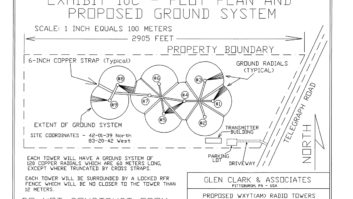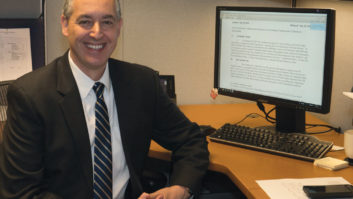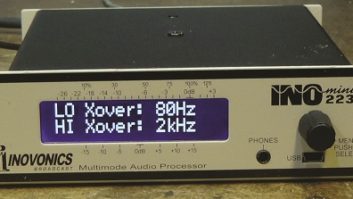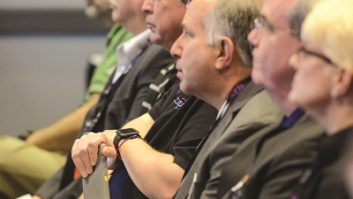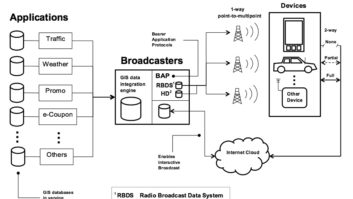The National Radio Systems Committee has been busy with several initiatives, including the release this spring of an EAS guideline for FM stations and ongoing examination of the sources of noise on the AM band in the United States.
The NRSC, which held meetings during the NAB Show this spring, is sponsored jointly by the National Association of Broadcasters and the Consumer Technology Association. The group aims to help broadcasters and receiver manufacturers come together to find solutions to common problems in radio broadcast systems.
The EAS guideline adopted in April sets forth recommendations regarding how broadcasters can best implement EAS functionality at their facilities. The action was taken at the first series of NRSC Subcommittee meetings to be conducted face-to-face at an NAB Show since 2019, according to David Layer, NAB VP of advanced engineering technology.
The EAS document does not represent a requirement for compliance to any standard. However, the group hopes that broadcasters, automation software vendors, transmission equipment manufacturers and consumer electronics manufacturers will find the recommendations in the document useful.
The NRSC’s Data Services and Metadata Subcommittee, chaired by Steve Shultis of New York Public Radio, adopted the guideline “Best Practices for Delivering Emergency Alerts and Information for FM Radio Broadcasters” (NRSC-G303).
The document includes technical information about radio broadcaster participation in EAS, as well as background information on the FCC rules pertaining to EAS and the infrastructure used to generate alert messages.
Methods of delivery of both EAS messages as well as lifeline emergency information provided by radio broadcasters are discussed in the document, Layer said.
The guideline includes a special focus on using metadata over FM radio signals, Layer said, including both analog and digital. NRSC noted the number of FM signals nationwide — about 13,000, plus another 9,000 translators and boosters — and how the service’s “ubiquitous and pervasive infrastructure” makes FM especially important following a natural disaster.
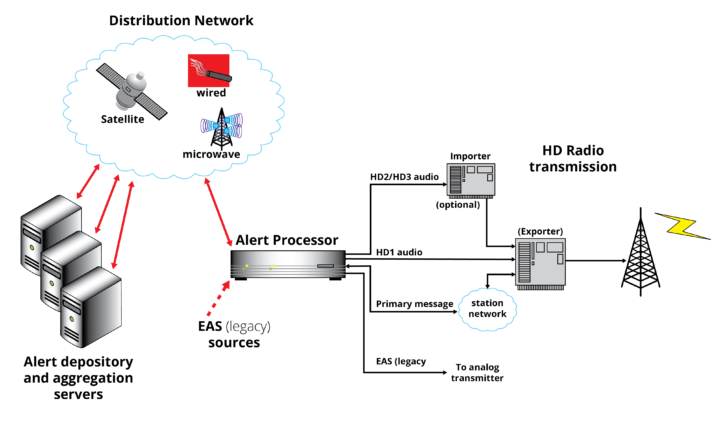
In the document, the NRSC acknowledges that reception and proper display of metadata is highly dependent on the receiver, but that metadata “sent using RDS is more likely to be used by listeners as there are a large number of RDS-equipped receivers in the marketplace.”
In addition, metadata provided over the HD Radio digital radio system will be useful for listeners who have HD Radio receivers, though these are fewer in number.
The guideline work was conducted within the Emergency Alerting and Information Working Group, chaired by Matt Straeb of Global Security Systems.
The document can be found here under the Standards and Guidelines tab.
The EAS guideline includes discussion of RDS best practices; the implications of locating broadcast functionality in the cloud; HD Radio broadcasting support of the HD Radio Emergency Alerts feature; and considerations for hybrid radio systems, including DTS AutoStage.
The Federal Communication Commission has been working on upgrading the Emergency Alert System in the U.S. It also recently updated its rules to increase the reliability, speed and accuracy of Wireless Emergency Alerts.
Other activities
Layer said the principal activity in the DSM Subcommittee is happening in its Metadata and Streaming Working Group, which is chaired by David Bialik, president of David Bialik & Associates.
The group has begun work on another NRSC document, NRSC-G304, “Metadata for Streaming Audio Guideline.” It will aim to assist radio broadcasters in supporting their audio streaming operations and better coordinating the use of metadata for over-the-air and streaming signals. This will be the first streaming-focused document developed by the NRSC, Layer said.
The guideline will focus on the HTTP livestreaming (HLS) method of audio streaming, which has become the de facto standard within the radio broadcasting industry, he said.
Meanwhile, the AM and FM Analog Broadcasting Subcommittee, chaired by Martin Stabbert, vice president of engineering for Townsquare Media, is studying several topics of interest to AM broadcasters, including the benefit of having AM carriers from different stations synchronized to help reduce co-channel interference from skywave propagation.
Layer said work also continues on a compendium of studies characterizing RF noise in the AM band with the goal of educating broadcasters, the Federal Communications Commission and others as to where all the noise is coming from.
Much of the AM work is being coordinated by the AM Improvement Working Group, chaired by Brian Henry, president of Henry Communications.
Meanwhile, the NRSC’s Digital Radio Broadcasting Subcommittee — co-chaired by Glynn Walden, consultant to Audacy, and Jackson Wang, president of e-Radio Inc. — is focused on continuing developments with in-band on-channel digital radio, Layer said.
[See Our Business and Law Page]
The IBOC Standards Development Working Group, Layer said, is developing a guideline for all-digital radio operations on the AM band, and updating the NRSC-5 In-band On-channel Digital Radio Broadcasting Standard, as part of a mandatory five-year review process. That update, which describes the Xperi HD Radio system, is expected to be completed by the end of this year.
The update includes new FM-band modes of operation, both backward-compatible and non-backward compatible, which would increase the digital capacity of radio stations and could be used, for example, to support the types of services found in the “Internet of Things,” Layer said.
Xperi is submitting updated reference documents for review by the IBOC standards group, which is chaired by Alan Jurison, senior operations engineer at iHeartMedia.
The next meeting of the NRSC is scheduled for Oct. 18 in conjunction with NAB Show New York.





